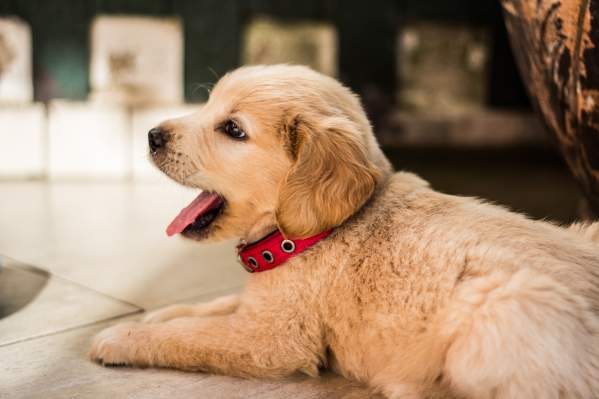Your puppy needs sufficient nutrients to grow up and become healthy and happy. As a pet parent, you want what’s best for your newfound friend. But deciding what to feed your energetic puppy is no simple feat. So what defines the best puppy food, and how do you find it?
What To Look For In Your Puppy's Food
There a ton of puppy foods available in today’s market; however, not every option has the nutrition your pup needs.
Focus On Quality Ingredients
Reading the ingredients is a key step in choosing a good-quality puppy food. Here are some of the top ingredients and nutrients to look for.
Look for real meat: Choose options that have real meat as the first ingredient. You should avoid "chicken by-product" which is made by grinding up the unused animal carcasses.
Look for whole foods: Aside from quality meat sources, your dog’s food should contain quality, whole-food vegetables, fruits, and grains.
Focus on nutrients: Docosahexaenoic acid, or DHA, is a natural omega-3 fatty acid that plays a critical role in the development of your dog's brain and nervous system. It also supports healthy vision.
Look At The Labeling
“Look for foods that have undergone AAFCO feeding trials. This means they have been extensively researched, and, their production has undergone the guidance of veterinary nutritionists," says Rachel Barrack, DVM, CVA, CVCH, founder of a mobile Animal Acupuncture service in New York City.
The Association of American Feed Control Officials (AAFCO) has been testing pet food products since the 1930s. However, pet food does is not required to go through AAFCO testing. So choosing a food that has the AAFCO stamp of approval can give you peace of mind that your pup is getting the essential nutrients it needs — and nothing more.
Consider Breed-Specific Food
Size and breed matters! "Toy breeds and giant breeds do not have the same nutritional needs, so always choose a dog food to support your puppy’s breed,” says Dr. Barrack. “Smaller breed food will also have smaller kibble. That makes ingestion easier."
What To Avoid In Your Puppy's Food
Reading the label is essential to selecting the right food for your puppy. While it’s important to focus on finding a food that has quality ingredients, like real meat sources, you must also keep an eye out for certain ingredients to avoid. This may include:
Fillers: Corn and rice bran; the hulls of peanuts, oats, and soybeans; and cereal by-products are all used as filler ingredients in dog food. These fillers add no nutritional value and are only used to bulk up the product. In other words, you end up feeding more to your puppy since there’s not as much nutrition in each bite.
Food dyes: You can usually spot food dyes without even reading the label. If the kibble is unnaturally colorful, you should avoid it. Food dyes add no nutritional value, they're only used to make the food look more appealing. Generally speaking, high-quality dog food manufacturers don’t use food dyes.
Chemicals: Three chemical preservatives you'll often see are Butylated Hydroxyanisole (BHA), Butylated Hydroxytoluene (BHT), and Ethoxyquin. Both BHA and BHT have been linked to cancer. And even though the United States does not allow for the human consumption of Ethoxyquin, it may still appear in dog food.
Rendered fat: Many dog food manufacturers use rendered fat to make it taste better—but it's also a source for toxins and microorganisms. What’s more, rendered fat may contain heavy metals and other dangerous elements. Its presence can also lead to harmful bacteria and mold if the food is exposed to moisture.
Look Beyond The Label
There's a final consideration you often can't see based on the puppy food label alone: contaminants. Many dog food manufacturers use questionable manufacturing processes that can expose otherwise healthy ingredients to contamination, which can make your dog sick.
The Clean Label Project (CLP) independently tests dog food for contamination. It ranks foods based on ingredient quality and the presence of contaminants. Before you settle on what to feed your puppy, be sure to look up the specific food in CLP's database to help you make an informed decision.
Do Your Research
Choosing the right puppy food doesn't have to be difficult. As long as you do your research, you'll be able to provide your pup with the perfect balance of nutrients.
